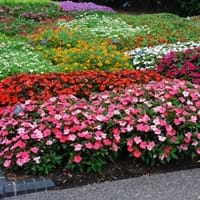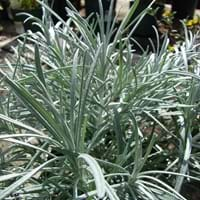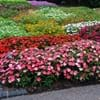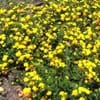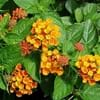Life Span
Annual and Perennial
Perennial
Type
Tender Perennial
Tender Perennial
Origin
Hybrid origin
Central Asia
Types
not available
not available
Habitat
Subtropical climates, Tropical regions
Dry areas, Hot climate regions, Low annual rainfall regions
USDA Hardiness Zone
9-15
8-11
AHS Heat Zone
12 - 1
12-8
Sunset Zone
H1, H2, 1a, 1b, 2a, 2b, 3a, 3b, 4, 5, 6, 7, 8, 9, 10, 11, 12, 13, 14, 15, 16, 17, 18, 19, 20, 21, 22, 23, 24
16, 17, 22, 23, 24
Habit
Clump-Forming
Cushion/Mound-forming
Flower Color
White, Red, Orange, Pink, Salmon, Lavender
Yellow
Flower Color Modifier
Bicolor
Bicolor
Fruit Color
Green
Gold, Sandy Brown
Leaf Color in Spring
Yellow, Red, Green, Dark Green, Burgundy, Bronze
Gray Green, Silver, Gray
Leaf Color in Summer
Yellow, Red, Green, Dark Green, Burgundy, Bronze
Gray Green, Silver, Gray
Leaf Color in Fall
Yellow, Red, Green, Dark Green, Burgundy, Bronze
Gray Green, Silver, Gray
Leaf Color in Winter
Light Green
Light Green
Plant Season
Spring, Summer, Fall, Winter
Spring, Summer, Fall
Sunlight
Partial Sun, Partial shade
Full Sun, Partial Sun
Type of Soil
Loam, Sand
Loam, Sand
The pH of Soil
Neutral
Neutral, Alkaline
Soil Drainage
Well drained
Well drained
Bloom Time
Indeterminate
Early Summer, Summer
Tolerances
Drought
Drought
Where to Plant?
Container, Ground, Pot
Container, Ground, Pot
How to Plant?
Stem Planting
Stem Planting
Plant Maintenance
Medium
Medium
Watering Requirements
Water when soil is dry
Allow to dry out slightly between watering
In Summer
Ample Water
Adequately
In Spring
Average Water
Moderate
In Winter
Ample Water
Average Water
Soil pH
Neutral
Neutral, Alkaline
Soil Type
Loam, Sand
Loam, Sand
Soil Drainage Capacity
Well drained
Well drained
Sun Exposure
Partial Sun, Partial shade
Full Sun, Partial Sun
Pruning
Prune prior to new growth
Prune in spring, Remove dead leaves, Remove shoots
Fertilizers
Water soluble fertilizers
All-Purpose Liquid Fertilizer, Put diluted fertilizers
Pests and Diseases
Aphids, Caterpillars, Downy mildew, Gray mold, Leaf spot, Red blotch, Root knot nematode, Spider mites, Thripes, Whiteflies
Black Spot, Caterpillars, Gray mold, Leafminers, Mealybugs, Root rot, Stem rot, Thripes, Whiteflies
Plant Tolerance
Drought
Drought
Flower Petal Number
Single
Single
Fragrant Bark/Stem
No
Yes
Foliage Texture
Medium
Medium
Foliage Sheen
Glossy
Matte
Attracts
Butterflies
Not Available
Allergy
Not Available
Not Available
Aesthetic Uses
Cottage Garden, Ground Cover, Showy Purposes
Not Used For Aesthetic Purpose
Beauty Benefits
No Beauty Benefits
Good for the Scalp, Improve hair condition, Improve skin condition, Improve skin tone, Natural Sunscreen, Nourishes scalp, Prevents Premature Baldness, Speed hair growth
Environmental Uses
Indoor Air Purification
Not Available
Medicinal Uses
No Medicinal Use
Asthma, Cramps, Menopause problems, Menstrual Disorders, Oral health, Respiratory Disorders, Skin Disorders, Skin irritation, Weight loss
Part of Plant Used
Whole plant
Root, Root bark
Other Uses
Used as Ornamental plant
Used As Food, Used for its medicinal properties
Used As Indoor Plant
Yes
No
Used As Outdoor Plant
Yes
Yes
Garden Design
Bedding Plant, Container, Edging, Hanging Basket, Mixed Border, Tropical
Container, Edging, Hanging Basket, Mixed Border, Rock Garden / Wall
Botanical Name
IMPATIENS 'Fisnics Magpink'
HELICHRYSUM thianschanicum
Common Name
Magic Pink New Guinea Impatiens, New Guinea Impatiens
Licorice Plant
In Hindi
न्यू गिनी Impatiens
मुलैठी
In German
Neu-Guinea Impatiens
Lakritze
In French
Nouvelle-Guinée Impatiens
réglisse
In Spanish
Nueva Guinea Impatiens
regaliz
In Greek
Νέα Γουινέα Impatiens
γλυκόρριζα
In Portuguese
Nova Guiné Impatiens
alcaçuz
In Polish
Nowa Gwinea Niecierpek
lukrecja
In Latin
Impatiens New Guinea
liquorice
Phylum
Magnoliophyta
Tracheophyta
Class
Magnoliopsida
Magnoliopsida
Family
Balsaminaceae
Asteraceae
Genus
Impatiens
Glycyrrhiza
Clade
Angiosperms
Angiosperms, Eudicots
Tribe
Not Available
Galegeae
Subfamily
Not Available
Faboideae
Number of Species
Not Available
Not Available
Season and Care of New Guinea Impatiens and Liquorice
Season and care of New Guinea Impatiens and Liquorice is important to know. While considering everything about New Guinea Impatiens and Liquorice Care, growing season is an essential factor. New Guinea Impatiens season is Spring, Summer, Fall and Winter and Liquorice season is Spring, Summer, Fall and Winter. The type of soil for New Guinea Impatiens is Loam, Sand and for Liquorice is Loam, Sand while the PH of soil for New Guinea Impatiens is Neutral and for Liquorice is Neutral, Alkaline.
New Guinea Impatiens and Liquorice Physical Information
New Guinea Impatiens and Liquorice physical information is very important for comparison. New Guinea Impatiens height is 15.20 cm and width 20.30 cm whereas Liquorice height is 30.50 cm and width 30.50 cm. The color specification of New Guinea Impatiens and Liquorice are as follows:
New Guinea Impatiens flower color: White, Red, Orange, Pink, Salmon and Lavender
New Guinea Impatiens leaf color: Yellow, Red, Green, Dark Green, Burgundy and Bronze
Liquorice flower color: Yellow
- Liquorice leaf color: Gray Green, Silver and Gray
Care of New Guinea Impatiens and Liquorice
Care of New Guinea Impatiens and Liquorice include pruning, fertilizers, watering etc. New Guinea Impatiens pruning is done Prune prior to new growth and Liquorice pruning is done Prune in spring, Remove dead leaves and Remove shoots. In summer New Guinea Impatiens needs Ample Water and in winter, it needs Ample Water. Whereas, in summer Liquorice needs Adequately and in winter, it needs Average Water.
